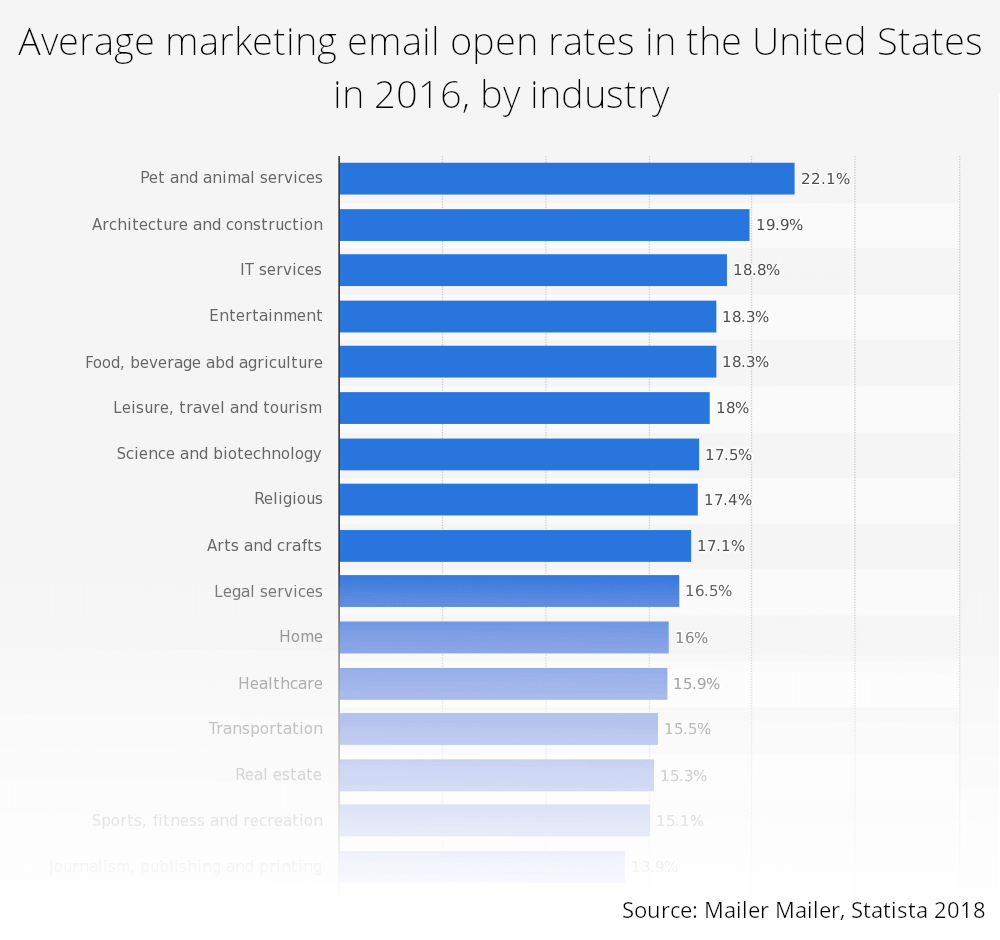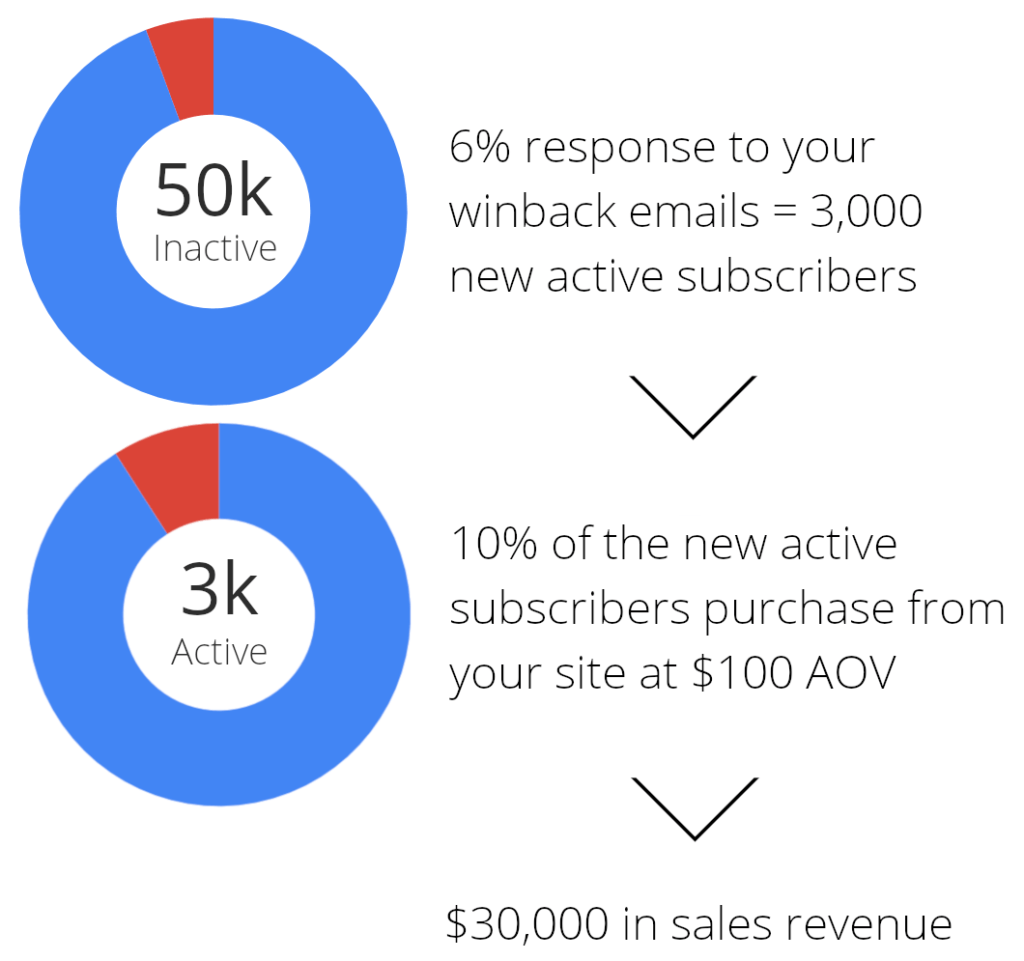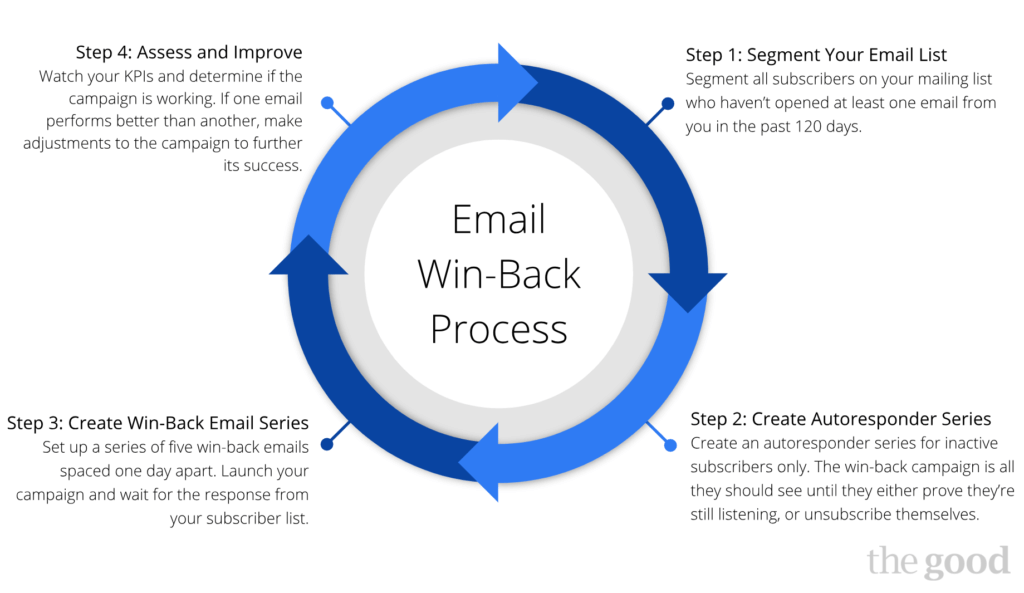
5 Principles for a Successful Win-Back Email Campaign
Follow these five principles to create a compelling win-back email campaign that’ll help convert your inactive subscribers into purchasing customers.
Win-back email campaigns: Get them right and they are the perfect first step in your email list-cleaning operation. Get them wrong, and you’ll throw away potentially valuable contact information and do yourself considerably more harm than good.
So, what’s the right way to conduct a win-back campaign?
In this article, I’ll give you five essential principles behind what works and what doesn’t work when it comes to win-back campaigns. Then, I’ll describe the field-tested steps you can take to feel a whole lot better about pressing the Delete button to remove inactive subscribers.
What Is a Win-Back Email Campaign?
A win-back email campaign is meant to re-engage subscribers who have stopped engaging with your messages. The aim is to get their attention and convince them to respond so you’ll know they’re still receiving your mail and are still interested in your products or services.
Why Are Win-Back Email Campaigns Important?
Email is one of the most effective marketing mediums at your disposal, yet the average open rate for ecommerce email currently sits below 16 percent (per Mailchimp’s monthly report on email campaign stats by industry).
Your engagement may be higher than that, but it’s probable that fewer than 20 of every 100 emails you send will ever get opened.
Many of the subscribers on your list have probably been dormant and disengaged from your email campaigns for months. They haven’t unsubscribed, but they’re either choosing to ignore your messages or are simply not seeing them.
The problem isn’t only that those subscribers are missing out on the benefits you’re offering them, but that their presence is driving your open and click-through rates down. That tells spam filters and other components of the email delivery system that your mail may not be desirable—thereby potentially causing your email delivery rate to sink even further.
It’s an ugly spiral you want to avoid.

Email open rates can vary significantly depending on the industry, as shown in this study from 2016 by Mailer Mailer
How Can I Boost Email Subscriber Engagement?
Everyone wants to know how to build a huge email list, but size doesn’t matter nearly as much as quality. An engaged list is a list that converts. You want subscribers to open your email, click your links, and ultimately buy your products or services—the more the better.
So what do you do when you’re paying enterprise-level rates to an email service provider (ESP) to host a large list of people, yet your open rate is hovering just above 10 percent?
The obvious and most-suggested solution is to clean the list. Set parameters for who stays and who goes, and then filter out the zombies and remove them. Pruning a 50,000-member mailing list down to 10,000 members can save you several thousand dollars per year in unnecessary expenses and help convince the spam traps that you’re only mailing to people who want to hear what you say.
But, by launching a win-back campaign before you perform list hygiene, you can reactivate a percentage of the prospects or customers you would have lost in the cleaning process. It’s a “don’t throw the baby out with the bathwater” approach to list management.
The best time for a win-back #email campaigns is just before cleaning the list
Are Email Win-Back Campaigns Cost-Effective?
Let’s say you send a series of win-back emails to the 50,000 subscribers on your list who haven’t responded to anything you’ve sent them in months, and let’s say that win-back effort generates a 6 percent response rate.
That means you’ve just resurrected 3,000 people who now want to hear more about your business. If 10 percent of those buy something from you in the next 30 days, and your average order value (AOV) is $100, then you just claimed $30,000 in sales.

But hold it. What if your average customer lifetime value is $6,500? That means your win-back campaign saved 3,000 customers who could potentially deliver millions of dollars in sales revenue.
Was it worth it?
You bet! And the best part is you can use your win-back strategy over and over again.
How Do I Create and Manage Win-Back Email Campaigns?
You now know why win-back email campaigns are important and understand the importance of launching win-back efforts prior to list cleaning operations. Next, let’s turn to the nuts and bolts of email win-back campaigns.
What are the factors influencing success?
Here are five win-back email principles you can take to the bank:
Enjoying this article?
Subscribe to our newsletter, Good Question, to get insights like this sent straight to your inbox every week.
1. Your case really is different.
You’ll find articles galore giving you the exact sequence you should use for a win-back email campaign. The examples you’ll find in those articles can certainly be helpful, but I’ve found that what works for one seller’s audience doesn’t work for another’s.
Like anything else in conversion rate optimization, you should be testing constantly to see what your particular audience responds to best. Never assume your results will be the same as the case study you read.
2. You need more than a catchy subject line.
Email marketers often fall victim to the idea that provocative subject lines and titles are the most important part of writing. While it’s true that getting the reader’s attention is the first necessary step in sales conversions, there’s a whole lot more to the process.
Strong subject lines will pull better open rates, but content that doesn’t live up to the promise made in the subject line will lead to dismal click-through rates and leave the prospect with a poor impression of your brand. Every part of your email must work together to convince subscribers to take the next step on the path to sales.
Your win-back campaign emails need the strongest subject lines you can muster, but make sure the content inside delivers on the promise you make on the outside. Don’t try to clickbait your audience in; just be helpful and honest, and your subscribers will appreciate you for it.
3. It’s not an incentive unless they really want it.
This can be a tough truth to grasp, but your best prospects don’t necessarily want the same things you want. One of the most formidable roadblocks in marketing is the false-consensus effect. We believe that everyone thinks and feels the same way we think and feel and that we know what’s best for them (if they would only listen).
False consensus is a cognitive bias that can lead us to ignore the data and make marketing decisions based on what we think rather than on what our prospects think. Win-back campaigns love to use freebies and discounts as a means of getting dormant subscribers to click a link and rejoin the family. Incentives work, that’s for sure—but make sure your offers appeal directly to your best prospects.
4. Everyone loves to be helpful and heard.
Subscribers who fail to respond to your freebie offers can sometimes be persuaded to respond to a call for help. Are you perplexed about whether to change your logo, add or remove a product from your store, or anything else your best prospects might have a strong opinion about?
Ask them.
When you show genuine interest in what people think and feel, they’ll return the favor. One of the best ways to show your respect for a person is by asking one simple question: “What do you think about this?”
5. Don’t stop testing.
At The Good, testing is central to everything we do. We know what we think, and our clients tell us what they think, but we can’t tell for sure what the customers think until we put something in front of them.
Mix it up with your email win-back campaigns. Experiment with a series of three emails versus a series of nine. Play around with the timing between sends, the time of day (or night) you send emails, and variations of the subject line.
Test everything—whether via A/B tests or multivariate testing—and then study the results to make your next email win-back campaign even more effective.
You Can’t Lose with Email Win-Back Campaigns
Win-back email campaigns can save subscribers who would otherwise be deleted from your mailing list. If you are successful with 10 percent of your inactive subscribers, then you’ve got plenty to celebrate. If nobody responds, at least it gives you the opportunity to clear out some of the contacts that are taking up space on your mailing list.
For those who want steps to follow, try this process:
1. Tag or otherwise segment all subscribers on your mailing list who haven’t opened at least one email from you in the past 120 days.
2. Create an autoresponder series for those subscribers only, and remove them from your regular sending schedule. The win-back campaign is all they should see until they either prove they’re still listening, unsubscribe themselves, or are eventually removed from the list as inactive and unresponsive.
3. Set up a series of five win-back emails spaced one day apart.
- Day one: Notify them they’re in danger of being removed from the list and that you need their response.
- Day two: Restate the situation, provide a special offer (incentive) for responding, and tell them how to unsubscribe.
- Day three: Repeat the offer and emphasize how critical the situation is.
- Day four: Ask subscribers for their opinion about something important to them.
- Day five: Give them one more chance at the special offer, and tell them there will be no more emails if they don’t respond.
4. Assess and improve your strategy. Closely monitor your open rates and click-throughs. If your emails aren’t performing the way you’d hoped, it’s time to reassess your approach and try something different.
That’s it. Wait at least three days after the final email is sent, and then remove the dead weight from your list. I know that can be a tough thing to do, but your subscriber base will be much healthier because of it. Every tree needs to be pruned from time to time.

If the results of your win-back efforts are dismal (3 percent or under), dig deeper to see if you’re experiencing a deliverability problem. They can’t open your mail if they don’t get it in the first place.
Here at The Good, we focus on optimizing conversion rates for ecommerce stores. If you’re searching for effective ways to increase conversions on your site, complete a free landing page assessment that’s designed to help you pinpoint specific problem areas on your site that need improvement.
Resources:
- What Others Fail to Teach About A/B and Multivariate Testing
- Email Win-Back Programs: Do They Work?
- How to Build a More Valuable Email List

About the Author
David Hoos
David Hoos is the former Director of Marketing at The Good and a trusted advisor to marketing experts.